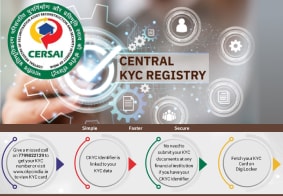CKYC Registry
-
Customer Service Contact us Service request Locate a branch
Find all the help you need
Scan the QR, get our app, and find help on your fingertips

Help CenterSupport topics, Contact us, FAQs and more
-
Login
Are you ready for an upgrade?
Login to the new experience with best features and services
-
Login
Are you ready for an upgrade?
Login to the new experience with best features and services
- Accounts
-
Deposits
IDFC FIRST Bank Deposits
View all Deposits -
Loans
IDFC FIRST Bank Loans
View all Loans - Wealth & Insure
-
Payments
IDFC FIRST Bank Payments
View all Payments -
Cards
IDFC FIRST Bank Cards
View all Cards - Blogs
- Corporate Account
-
Cash Management Services
IDFC FIRST Bank Cash Management Services
View all Cash Management Services - Supply Chain Finance
-
Corporate Lending
IDFC FIRST Bank Lending
View all -
Treasury
IDFC FIRST Bank Treasury
See more details - NBFC Financing
Support topics, Contact us, FAQs and more
- IDFC FIRST Bank Accounts
-
Savings Account
-
Corporate Salary
Account -
Senior Citizens
Savings Account -
First Power
Account -
Current Account
-
NRI Savings
Account -
TASC Institutional
Account -
Savings Account
Interest Calculator
- IDFC FIRST Bank Deposits
-
Fixed Deposit
-
Recurring Deposit
-
NRI Fixed Deposit
-
Safe Deposit Locker
-
FD Calculator
-
RD Calculator
- IDFC FIRST Bank Loans
-
Personal Loan
-
Consumer Durable
Loan -
Home Loan
-
Business Loan
-
Professional Loan
-
Education Loan
-
New Car Loan
-
Pre-owned Car Loan
-
Two Wheeler Loan
-
Pre-owned Two
Wheeler Loan -
Commercial Vehicle
Loan -
Gold Loan
-
Loan Against Property
-
Loan Against Securities
-
Easy Buy EMI card
-
Personal Loan
EMI Calculator -
Education Loan
EMI Calculator -
Home Loan
EMI Calculator -
EMI Calculator
-
Personal Loan Eligibility Calculator
- IDFC FIRST Bank Wealth & Insure
-
FIRST Select
-
FIRST Wealth
-
FIRST Private
-
Mutual Funds
-
Sovereign Gold Bond
-
Demat Account
-
Term Insurance
-
Life Insurance
-
Health Insurance
-
General Insurance
-
Bonds
-
Loan Against
Securities -
Portfolio Management
Service
- IDFC FIRST Bank Payments
-
FASTag
-
Credit Card
Bill Payments -
UPI
-
Funds Transfer
-
Forex Services
-
Pay Loan EMI
- IDFC FIRST Bank Cards
-
Ashva :
Metal Credit Card -
Mayura :
Metal Credit Card -
FIRST Millennia
Credit Card -
FIRST Classic
Credit Card -
FIRST Select
Credit Card -
FIRST Wealth
Credit Card -
FIRST WOW!
Credit Card -
Deals
-
Debit Cards
-
Co-branded Cards
-
Credit Card
EMI Calculator -
FIRST Corporate
Credit Card -
FIRST Purchase
Credit Card -
FIRST Business
Credit Card
- Premium Metal Credit Cards
-
AshvaLifestyle1% Forex₹2,999
-
MayuraLifestyleZero Forex₹5,999
-
FIRST PrivateInvite Only
- Best for travellers
-
MayuraZero ForexMetal₹5,999
-
Ashva1% ForexMetal₹2,999
-
FIRST WOW!Zero ForexTravelLifetime Free
-
FIRST SWYPTravel OffersEMI₹499
-
FIRST Select1.99% ForexLifestyleLifetime Free
-
FIRST Wealth1.5% ForexLifestyleLifetime Free
-
Club VistaraTravelLifestyle₹4,999
-
IndiGo IDFC FIRST Dual Credit CardTravelLifestyle₹4,999
- Max benefits, Free for life
-
FIRST Classic10X RewardsShoppingNever Expiring Rewards
-
FIRST Millennia10X RewardsShoppingNever Expiring Rewards
-
FIRST Select10X RewardsLifestyle1.99% Forex
-
FIRST Wealth10X RewardsLifestyle1.5% Forex
-
FIRST WOW!RewardsTravelZero Forex
-
LIC ClassicRewardsInsuranceShopping
-
LIC SelectRewardsInsuranceShopping
- Reward Multipliers
-
AshvaLifestyleMetal₹2,999
-
MayuraLifestyleZero Forex₹5,999
-
FIRST ClassicNever Expiring RewardsShoppingLifetime Free
-
FIRST MillenniaNever Expiring RewardsShoppingLifetime Free
-
FIRST SelectNever Expiring RewardsLifestyleLifetime Free
-
FIRST WealthNever Expiring RewardsLifestyleLifetime Free
- Rewards & Credit on UPI
-
FIRST Power+FuelUPI₹499
-
FIRST PowerFuelUPI₹199
-
FIRST EA₹NVirtual1% Cashback₹499
-
FIRST DigitalVirtualUPI₹199
-
IndiGo IDFC FIRST Dual Credit CardUPITravelDual cards
- Fuel and Savings
-
FIRST PowerRewardsUPI₹199
-
FIRST Power+RewardsUPI₹499
-
LIC ClassicRewardsInsuranceShopping
-
LIC SelectRewardsInsuranceShopping
- Express and Flaunt
-
AshvaMetal1% Forex₹2,999
-
MayuraMetalZero Forex₹5,999
-
FIRST SWYPEMIOfferMAX₹499
-
FIRST MillenniaRewardsShoppingLifetime Free
- FD Backed rewarding Credit Cards for all
-
FIRST EA₹NVirtualCashback₹499
-
FIRST WOW!Zero ForexTravelLifetime Free
-
CreditPro Balance TransferTransfer & SaveReduce InterestPay Smartly
- IDFC FIRST Bank NRI Forex Solutions
-
Send money to India-Wire transfer
-
Send money to India-Digitally
-
Send money abroad
-
Max Returns FD (INR)
- IDFC FIRST Bank MSME Accounts
-
Platinum Current
Account -
Gold
Current Account -
Silver Plus
Current Account -
Merchant Multiplier
Account -
Agri Multiplier
Account -
TASC Institutional
Account -
Dynamic Current
Account -
World business
Account -
First Startup
Current Account
- IDFC FIRST Bank Business Loans
-
Business Loan
-
Professional Loan
-
Loan Against Property
-
Business Loan for Women
-
Working Capital Loan
-
Construction Equipment Loan
-
Machinery Loan
-
Healthcare Equipment Loan
- IDFC FIRST Bank Business Solutions
-
Payment Solutions
-
Tax Payments
-
Doorstep Banking
-
Point of Sale (POS)
-
Escrow Accounts
-
NACH
-
Payment Gateway
-
UPI
-
Virtual Accounts
-
As per amendment in the Income Tax Rules, PAN or Aadhaar are to be mandatorily quoted for cash deposit or withdrawal aggregating to Rupees twenty lakhs or more in a FY. Please update your PAN or Aadhaar. Kindly reach out to the Bank’s contact center on 1800 10 888 or visit the nearest IDFC FIRST Bank branch for further queries.
-
-
Most Searched
Sorry!
We couldn’t find ‘’ in our website
Here is what you can do :
- Try checking the spelling and search
- Search from below suggestions instead
- Widen your search & try a more generic keyword
Suggested
Get a Credit Card
Enjoy Zero Charges on All Commonly Used Savings Account Services
Open Account Now
Savings Account
How Digital Banks are Making Quality Banking Accessible to all?
Key Takeaways
Digital banks offer high-interest accounts with instant onboarding, eliminating paperwork and branch visits.
From budgeting to predictive savings and automated deposits, they actively use Artificial Intelligence (AI) to help customers manage money efficiently and grow savings.
With 24/7 access, no hidden charges, and integrated financial tools, banks like IDFC FIRST Bank are transforming savings into a fully digital, customer-first experience.
In a world where almost everything can be done online — from shopping and education to healthcare — banking too has undergone a remarkable digital transformation. Digital banks, with their convenience, transparency, and innovation, are changing how India saves, spends, and manages money. Among these, IDFC FIRST Bank is leading the charge in making quality banking services accessible to everyone, everywhere.
READ MORE
Banking beyond branches
Traditional banking often meant standing in queues, filling forms, and visiting branches during working hours. But with digital-first banks like IDFC FIRST Bank, customers can now open and operate a fully digital savings account right from their smartphones — anytime, anywhere. No paperwork, no branch visits, no waiting.
The entire account opening process is quick, seamless, and secured with video KYC and AI-powered verification systems, ensuring that anyone — whether in a metro city or a small town — can access reliable banking services.
Affordable, transparent, and customer-first
One of the biggest barriers in traditional banking was the hidden charges and complex fee structures. IDFC FIRST Bank takes a different, customer-first approach.
- Low balance requirements on savings accounts
- Higher interest rates on savings deposits
- No hidden fees and fully transparent terms
This not only makes banking more inclusive but also helps individuals from diverse backgrounds — students, freelancers, gig workers, homemakers — start saving and managing their money more effectively.
Empowering smaller cities and rural areas
In India, where access to physical bank branches is still limited in rural areas and Tier 2/3 cities, digital banking bridges the gap. IDFC FIRST Bank leverages its advanced digital banking platform to deliver reliable financial services without geographical restrictions.
Whether it’s paying utility bills, sending money to family, investing in a fixed deposit, or simply checking account balances, everything can be done digitally — putting financial control directly in people’s hands.
Designed for the digital generation
Today’s banking customer demands speed, ease, and personalisation. IDFC FIRST Bank’s user-friendly app interface, 24/7 customer support, and real-time transaction alerts make everyday banking not just accessible but also enjoyable.
What’s more? It’s not just for the tech-savvy youth — even senior citizens, small business owners, and first-time digital users are finding it easier to adapt, thanks to intuitive features and simplified processes.
The Role of Artificial Intelligence (AI) in digital savings
AI is the engine that backs a personalised and smart banking experience.
1) AI-driven budgeting
AI algorithms assess spending patterns as well as suggest customised budgets. These tools allow users to take control of expenses and prepare consistent saving habits with minimal effort.
2) Predictive saving recommendations
Fintech savings platforms use AI to recommend how much a customer should save, when to save, and where to invest, based on income, expenses, and financial goals.
3) Automated savings triggers
Automated deposits from savings into Fixed Deposits (FDs) are powered by AI, once an auto-mandate is set up. This savings feature helps create passive wealth over time.
Advantages over traditional savings accounts
Digital savings accounts are engineered for the modern consumer’s lifestyle and expectations.
1) 24/7 access and control
With online banking and mobile apps, customers have full control over their accounts—balance checks, fund transfers, bill payments—all at their fingertips, round the clock.
2) No hidden charges, full transparency
Most neobanks provide a fee-free experience with clear disclosures. No hidden charges or confusing fine print—just straightforward, customer-centric banking.
3) Superior user experience
From app interfaces to customer support, digital banks are prioritising user experience with intuitive design and seamless navigation.
Challenges and concerns of digital-only banks
While the innovation is exciting, digital-only banking comes with its own set of hurdles.
1) Limited physical presence
The lack of physical branches may be a concern for users, especially in tier 2 & 3 cities, who still value face-to-face interactions or need offline support.
2) Cybersecurity risks
As digital banking grows, so do cyber threats. Protecting against data breaches and fraud remains a priority.
3) Regulatory uncertainty
Neobanks often operate in partnership with traditional banks due to the Reserve Bank of India’s (RBI) licensing limitations. This hybrid model can lead to confusion about legal responsibilities and deposit safety.
Future of digital savings accounts
The next phase of growth is being shaped by regulation, customer demand, and deeper tech integration.
1) Expansion into tier 2 and 3 cities
As smartphone penetration rises, digital banks are eyeing smaller towns with vernacular interfaces and low-data apps, ensuring financial inclusion at scale.
2) Smart financial ecosystems
Fintech savings accounts will evolve into full-fledged financial ecosystems, integrating credit, insurance, investments, and tax-saving products.
With RBI exploring digital bank licences and frameworks, the regulatory path is expected to become clearer—strengthening consumer trust and accelerating growth.
Conclusion: Should you switch to a digital-only savings account?
For digitally savvy Indians, the shift to a digital savings account is more than a trend—it’s a smarter way to bank. If you value higher returns, zero-balance freedom, 24/7 control, and AI-powered insights, then switching makes sense.
But while digital-only banks promise speed and innovation, they can also bring concerns around security, customer support, and regulatory compliance. This is where the IDFC FIRST Bank Savings Account strikes the perfect balance, blending the convenience of digital-only banks and the trust of traditional banks.
As India moves towards a cashless, connected economy, banks like IDFC FIRST Bank are playing a pivotal role in democratising access to high-quality banking services. By removing physical, financial, and technological barriers, they are ensuring that every Indian has the opportunity to save, grow, and manage money securely and confidently.
If you haven’t experienced digital-first banking yet, maybe it’s time to explore the IDFC FIRST Bank Savings Account — a smarter, simpler way to bank.
Frequently Asked Questions
What is the difference between a digital and a traditional savings account?
A digital savings account is opened and operated entirely online, offering instant access, zero paperwork, and often higher interest rates, while a traditional savings account may require branch visits and physical documentation.
How digital banking has changed the traditional banking system?
Digital banking has transformed the system by enabling 24/7 access, faster transactions, personalised insights, and branchless operations, making banking more efficient and customer friendly.
How to convert a digital savings account into a regular savings account?
You can visit the partner bank’s nearest branch with your KYC documents and request the conversion. Some banks may also allow online upgrades based on verification.
What is the idea of a digital-only bank?
Digital-only banks focus on seamless app-based banking, lower costs, and smart financial tools. Note that IDFC FIRST Bank not only supports traditional banking but also has a digital savings platform that operates entirely online with no visits to the branch required.
Disclaimer
The contents of this article/infographic/picture/video are meant solely for information purposes. The contents are generic in nature and for informational purposes only. It is not a substitute for specific advice in your own circumstances. The information is subject to updation, completion, revision, verification and amendment and the same may change materially. The information is not intended for distribution or use by any person in any jurisdiction where such distribution or use would be contrary to law or regulation or would subject IDFC FIRST Bank or its affiliates to any licensing or registration requirements. IDFC FIRST Bank shall not be responsible for any direct/indirect loss or liability incurred by the reader for taking any financial decisions based on the contents and information mentioned. Please consult your financial advisor before making any financial decision.
The features, benefits and offers mentioned in the article are applicable as on the day of publication of this blog and is subject to change without notice. The contents herein are also subject to other product specific terms and conditions and any third party terms and conditions, as applicable. Please refer our website www.idfcfirstbank.com for latest updates.























